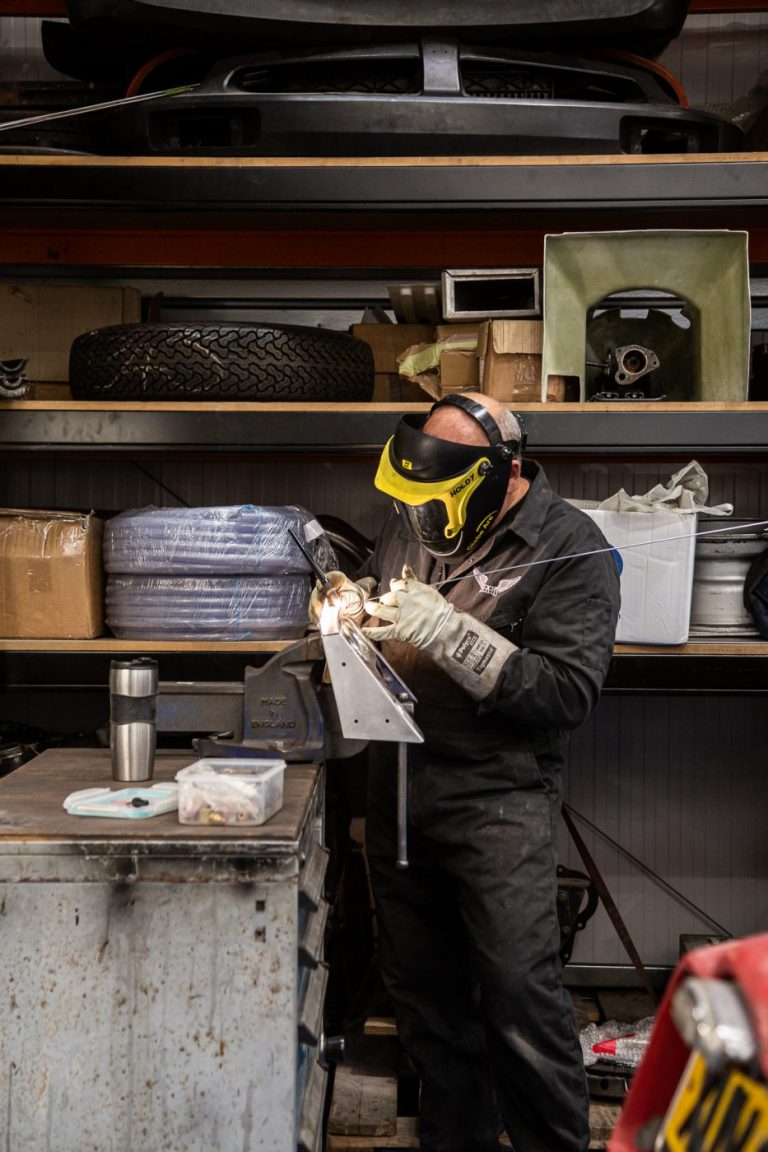
Stuck Together – Welding Aluminium Parts for the 2022 Bridge C-Type Replica
Our fabricator, Clinton, has been working on more of the aluminium pieces for our 2022 Bridge C-Type Replica. Each of the hand-made pieces has been


Our fabricator, Clinton, has been working on more of the aluminium pieces for our 2022 Bridge C-Type Replica. Each of the hand-made pieces has been

The name Dodge conjures up an image of strong, reliable and purposeful cars from the 1950s, 60s and 70s. But, the history of the company,

The Bridge Classic Cars paint and body team have been working on perfecting the wheel wells of the 1956 Jensen 541. After the team had
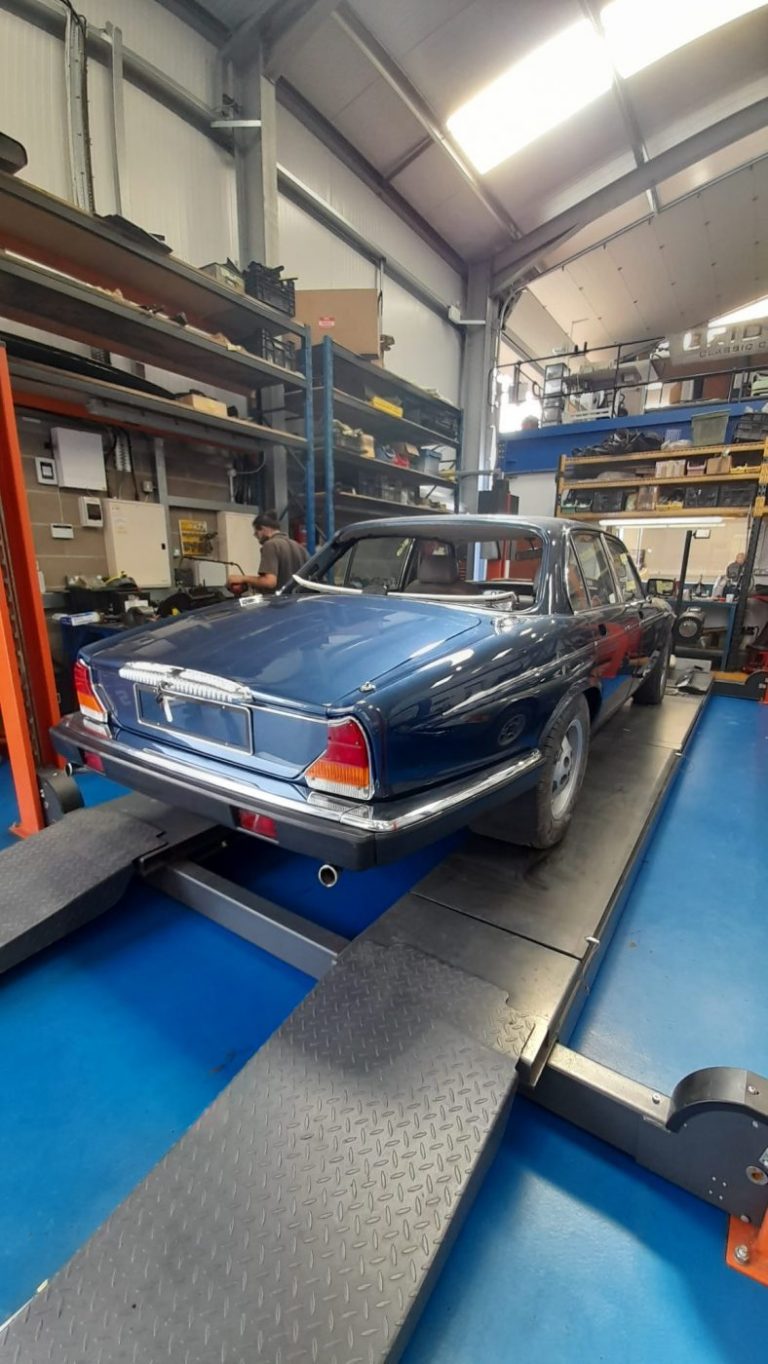
The 1987 Daimler Double Six has been coming back together in the Bridge Classic Cars restoration workshop at our Suffolk HQ. The workshop team have

The workshop team at Bridge Classic Cars have fired up the ‘Barn Find’ 1959 Jensen 541R for the first time in several years. The team

The beautiful bright-blue 1971 MG B GT which recently arrived at the Bridge Classic Cars workshop has been bought by a member of the team!
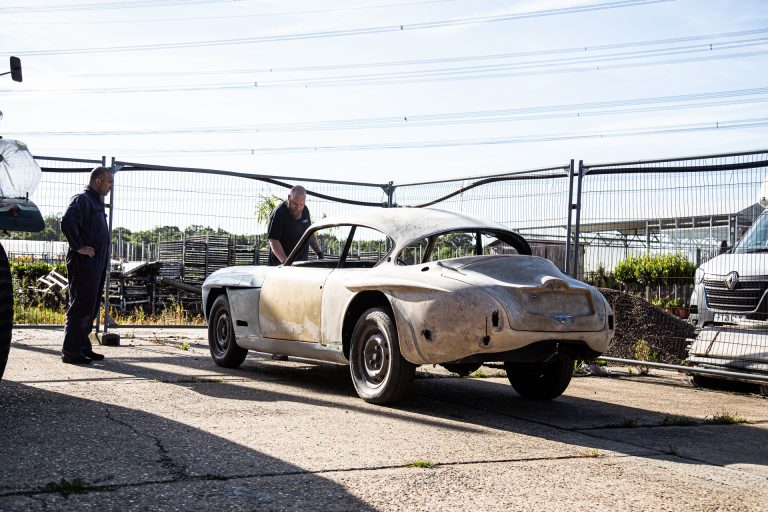
The paint and body team at the Bridge Classic Cars restoration workshop have been out to inspect the 1958 Jensen 541R which arrived yesterday at

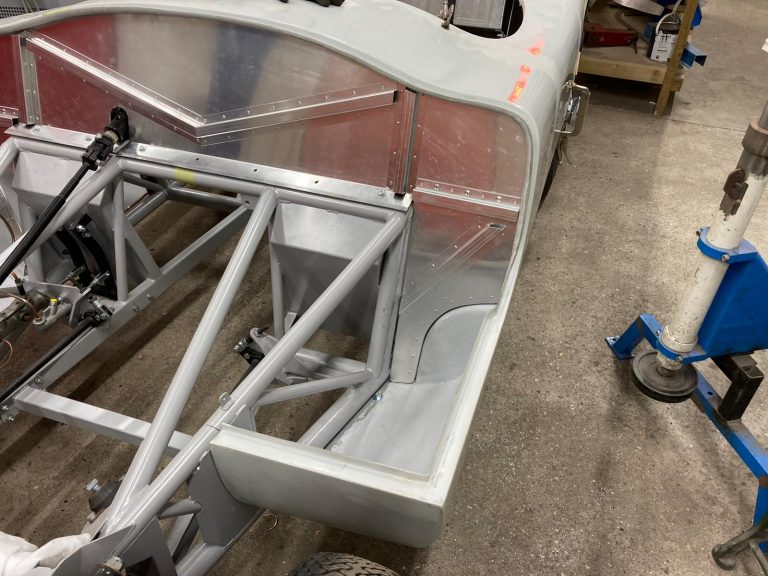
The body and handmade bulkhead have been fitted into our C-Type Replica by the Bridge Classic Cars in-house fabrication shop. Our fabricator Clinton has hand-finished
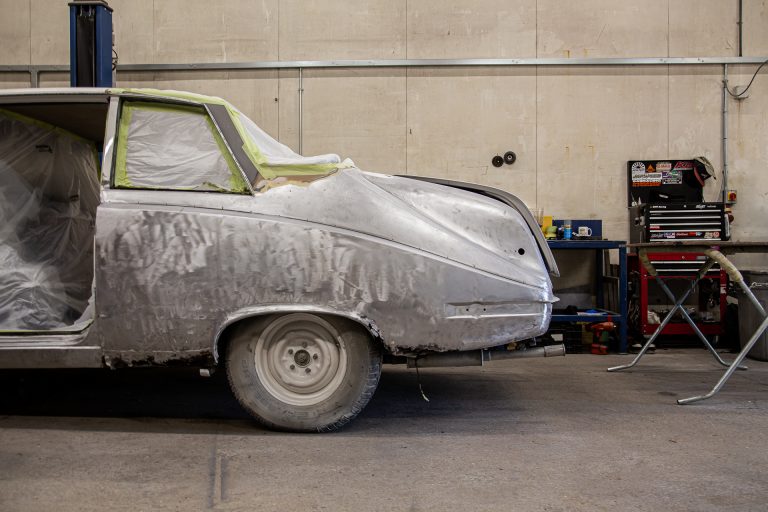
The 1986 Daimler DS420 has been moved from the body preparation department into the in-house fabrication shop at the Bridge Classic Cars Suffolk restoration workshops.
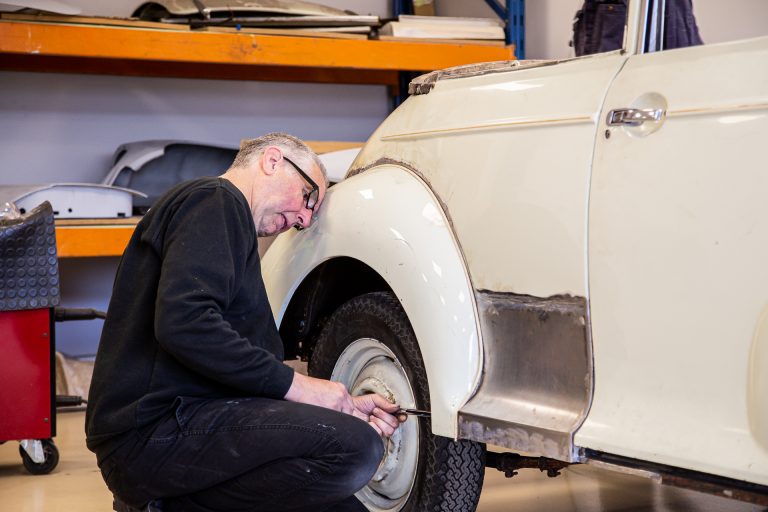
The 1969 Morris Minor Convertible has moved over from the fabrication bay into the body shop here at the Bridge Classic Cars HQ in Suffolk.

The 1956 Jensen 541 chassis which arrived back at the Bridge Classic Cars HQ recently has been moved into our restoration workshops for the team

The Bridge Classic Cars workshop team have been looking at the 1960 Jensen 541S as part of an investigation into a running issue on the
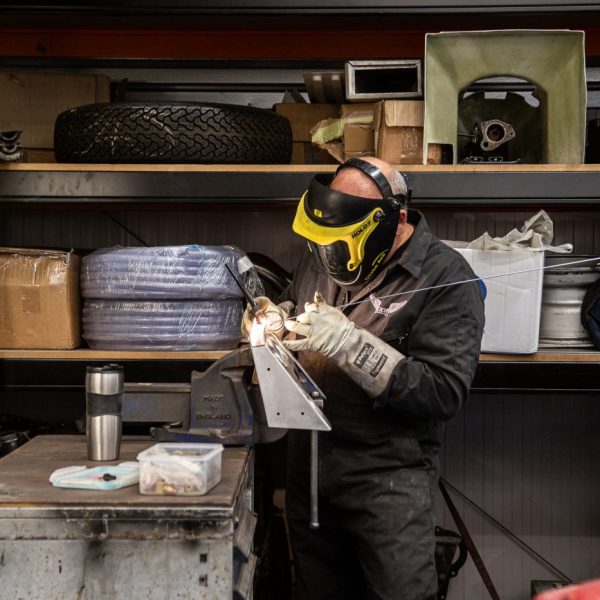
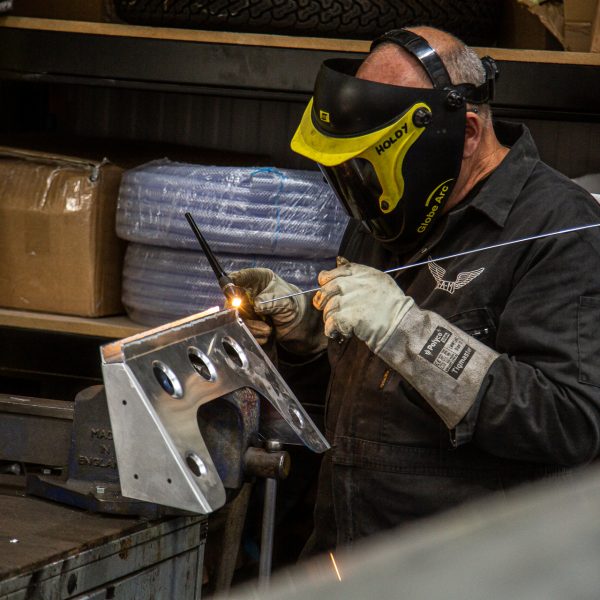

Our fabricator, Clinton, has been working on more of the aluminium pieces for our 2022 Bridge C-Type Replica. Each of the hand-made pieces has been test fitted into the car to double-check tolerances before being taken out and cleaned.
After cleaning, Clinton could weld them up on the bench to create their final and complete shape before rechecking their fitment in the car.
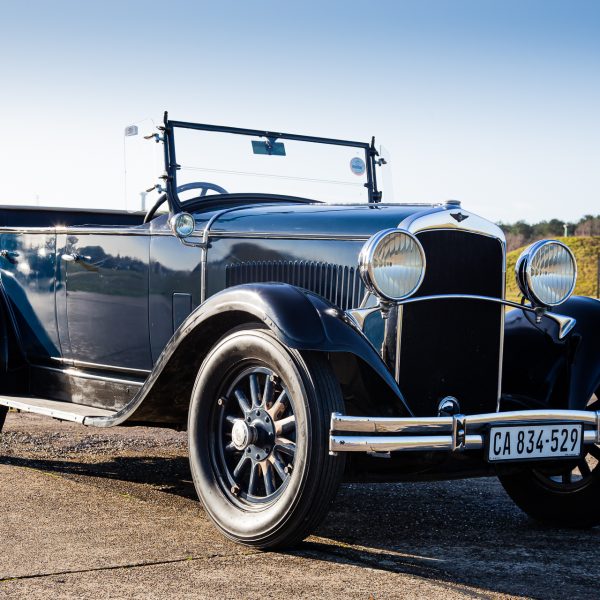
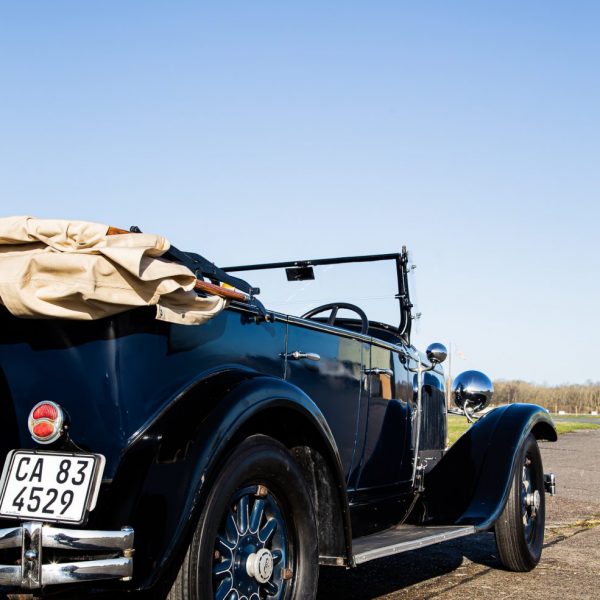
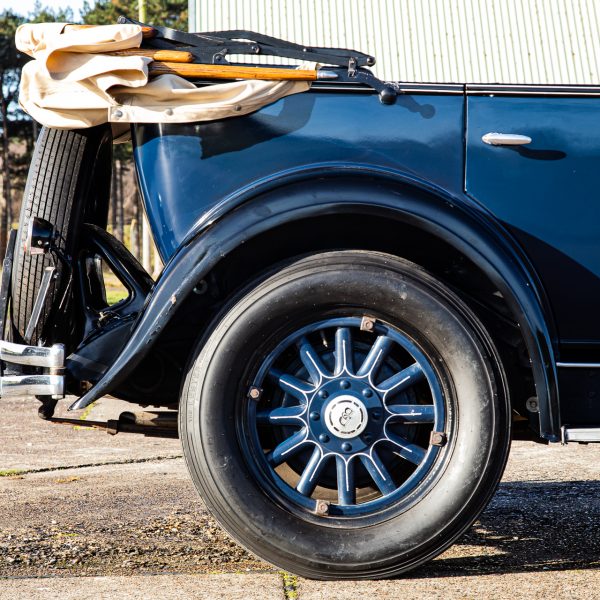
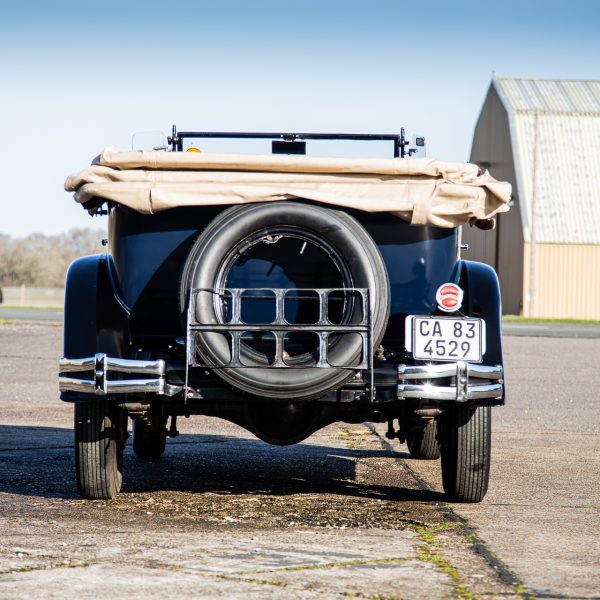
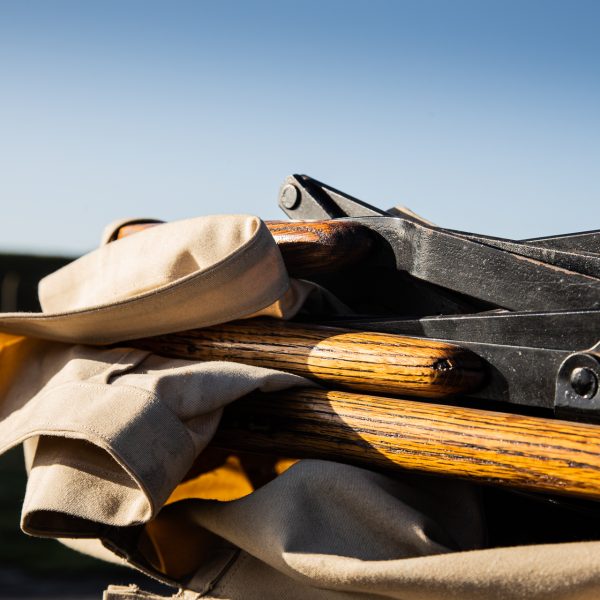

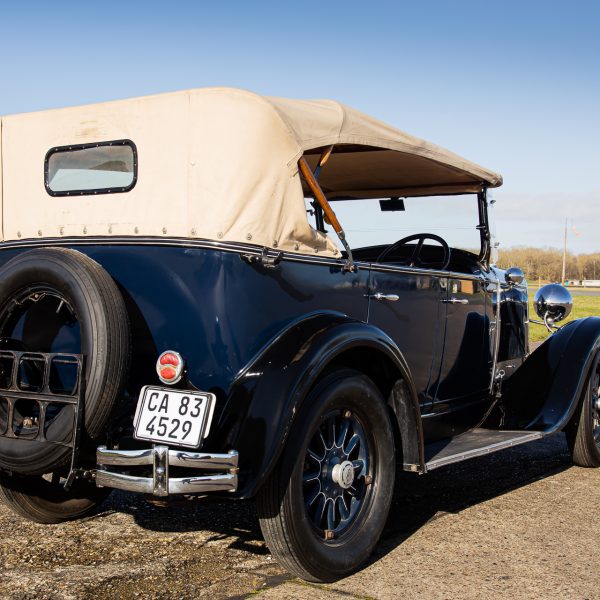
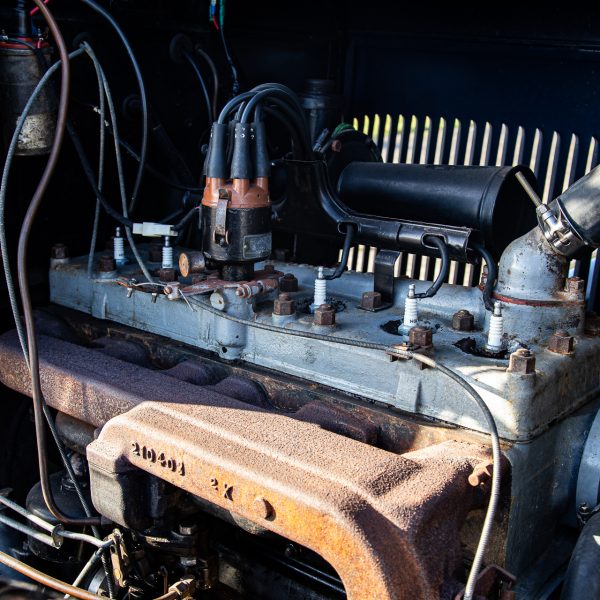


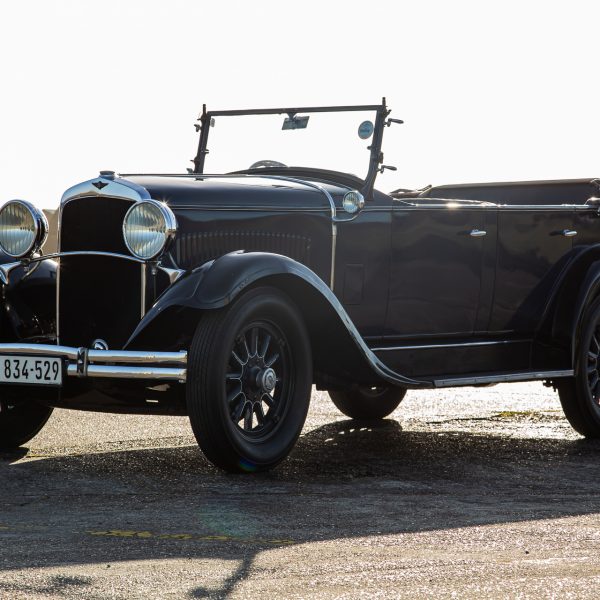

The name Dodge conjures up an image of strong, reliable and purposeful cars from the 1950s, 60s and 70s. But, the history of the company, its models and the 2 brothers behind it is greater than the sum of its parts.
The Dodge Brothers, John and Horace, began their empire in a small machine shop in Detroit, Michigan. Originally, the two brothers began making bicycle parts before ever getting involved in the fledgeling automotive industry springing up around the city and surrounding area.
They had worked closely with Henry Ford (in fact, the brothers for a time held high-up positions within the Ford Motor Company) by lending their manufacturing knowledge, business know-how and investment into the very early days of Ford (they also had done engineering and machining work at the early stages of the Oldsmobile company). What they learned while producing all manner of components for the unprecedented production run of the Model T, would set them on the way to creating a car company the likes of which the world had never seen.
Early automobiles of the time were notoriously fragile, dangerous and rather unrefined. The Dodge Brothers set out to change all of that. It’s remarked on that Dodge actually gave the world the word ”Dependability” because of how rugged the engineering behind their own cars was, but also because they didn’t shake their passengers into oblivion across the mostly dirt roads of early 20th century America. And, they didn’t break the bank…
Dodge would also be a pioneer in the use of 12-volt electrics as standard in cars, something that wouldn’t truly catch on industry-wide for another 50-60 years afterwards. The sheer ruggedness of the Dodge Brothers’ cars saw them scattered to the most far-flung reaches of the known world, all four corners of the earth had a Dodge somewhere.
The DA broke cover in 1929, under its official name the DA Six. The car would come 9 years after the unfortunate passing of its founding brothers but carried their legendary name and their approach to rugged yet refined engineering. One of the greatest refinements pioneered on the DA’s was the use of rubber engine mounts, which stopped the harsh vibrations from the 6-cylinder engine and 3-speed gearbox being transmitted through the frame and into the cabin of the car. Not only for comfort but to stop anything from rattling itself loose and to top it all off, the DA’s were fitted with hydraulically controlled drum brakes on all 4 corners of the car. A first for an American-built car up until that point.
Our particular 1929 Dodge Brothers DA Phaeton/Tourer has spent some of its 97-year life in South Africa. The car was in the care of collector John Ryall who used this incredible patina’d pre-war tourer, it was used on rallies and tours across the country and kept stored away safely when not in use. We then acquired the car before having it loaded up inside of a shipping container and sent it all the way to us here in England. Our workshop team could not believe just how good of a condition this classic Dodge was in!
And that is how our part of the story begins with the stunning dark blue 1929 Dodge DA. We’re currently awaiting its UK registration and it is up for sale right now on our classic car sales platform, MyClassics!
If you want to read another absolutely incredible and heartfelt story of a couple’s love story with a one-family owned, 1927 Dodge then click here to read the wonderful story from Motorious which inspired us to write the history of our 1929 Dodge Brothers DA.
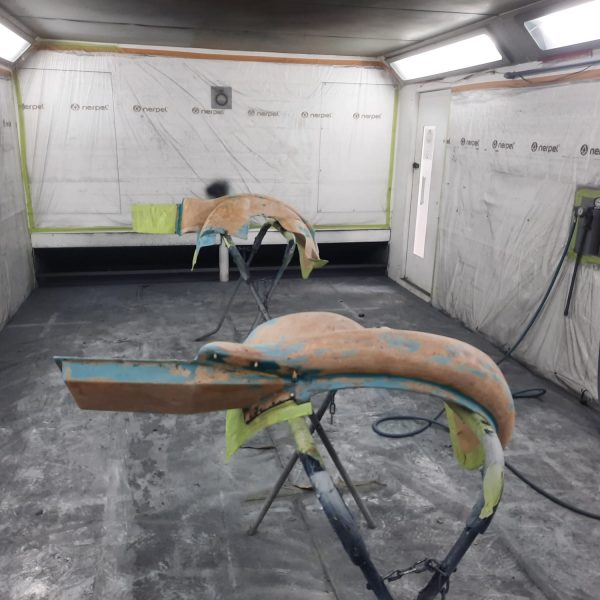
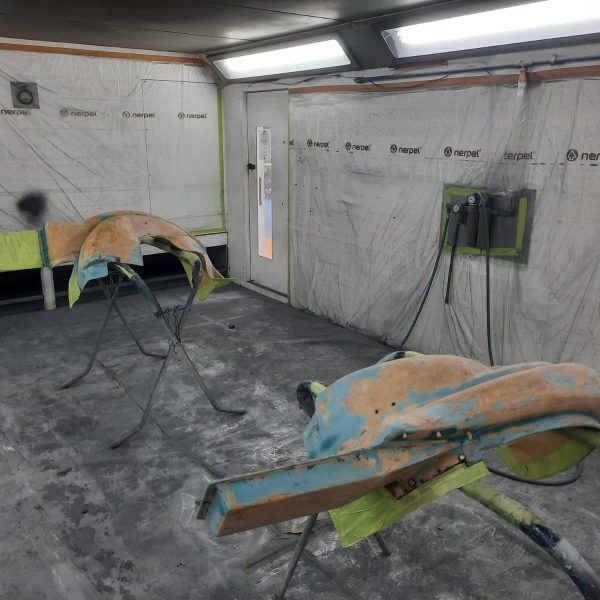
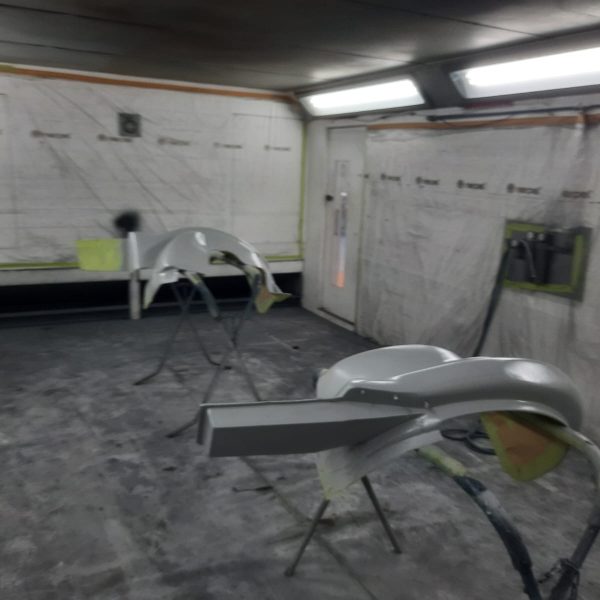
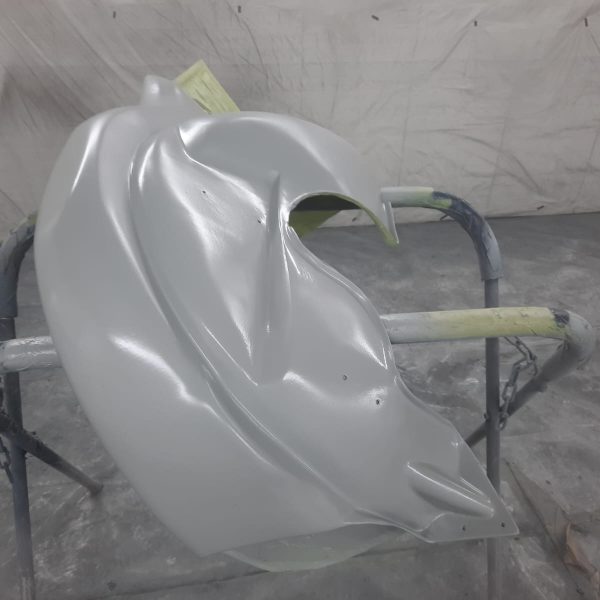
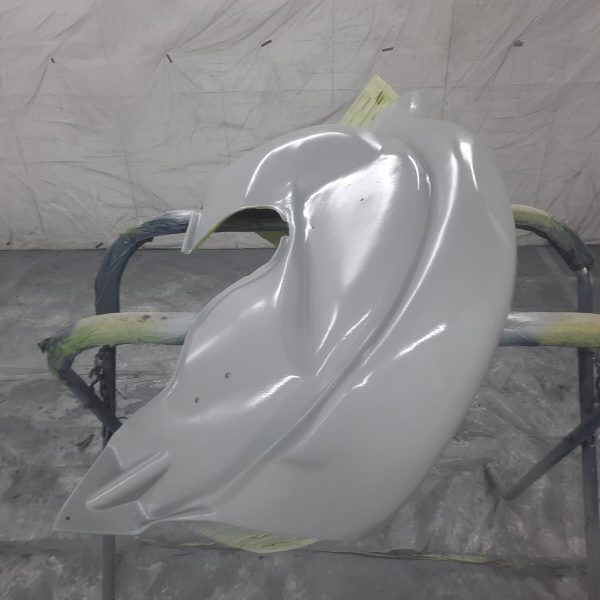
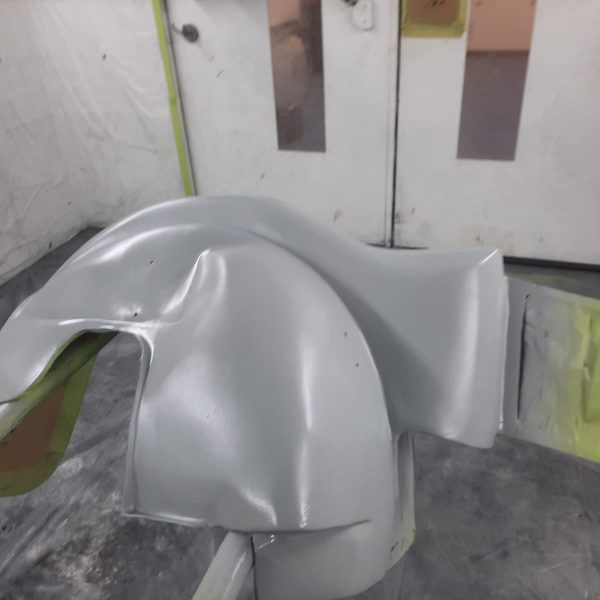
The Bridge Classic Cars paint and body team have been working on perfecting the wheel wells of the 1956 Jensen 541.
After the team had finished with the careful resin and fibreglass filler work, the team brought them into our in-house paint booth/oven to have their first coats of primer.
The team have carefully blended aluminium and fibreglass to remake and repair the wheel wells so the primer has covered these seamlessly blends. The wells will be now put into storage for the reassembly stage of the restoration.

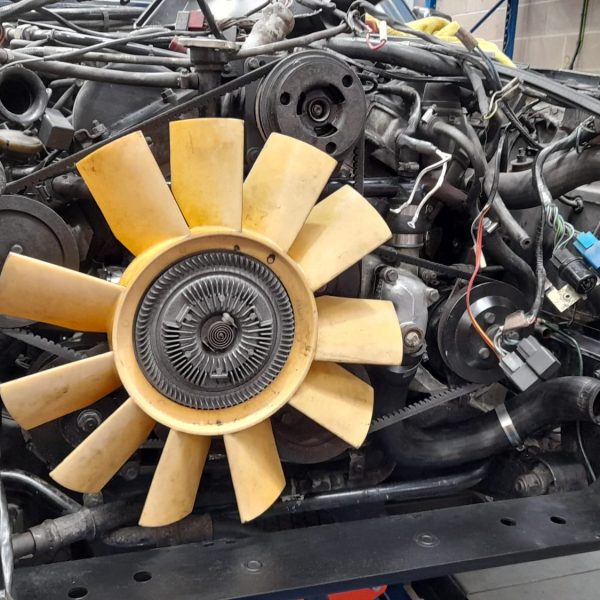

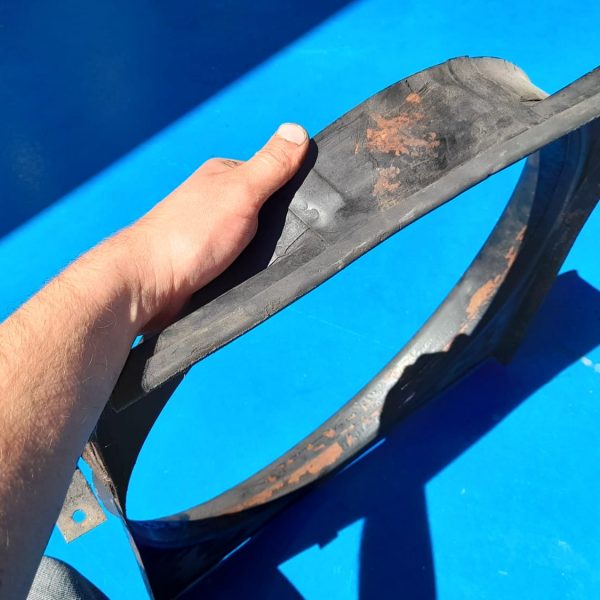
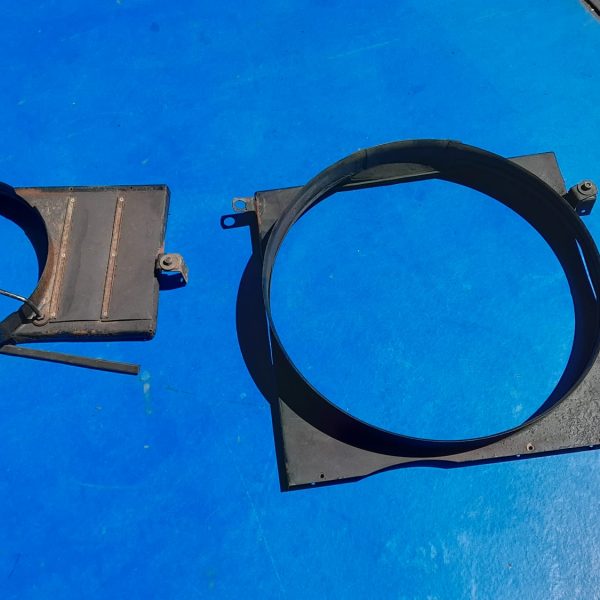
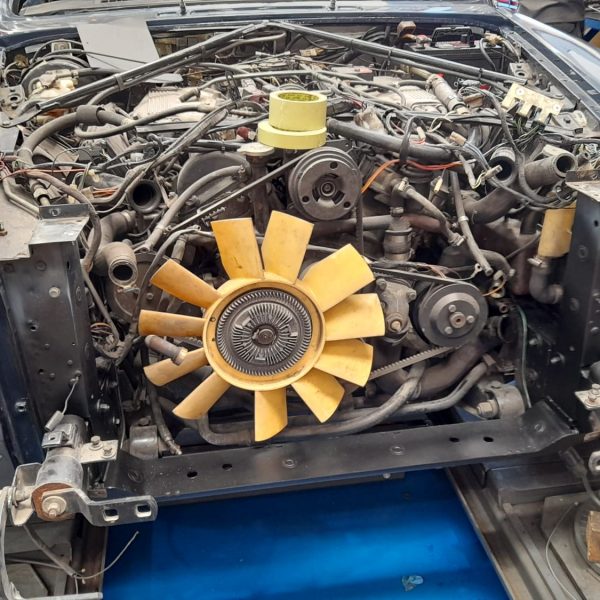
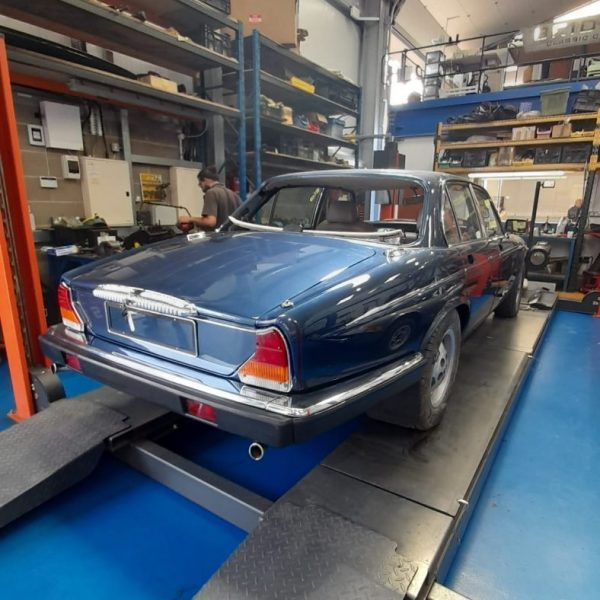


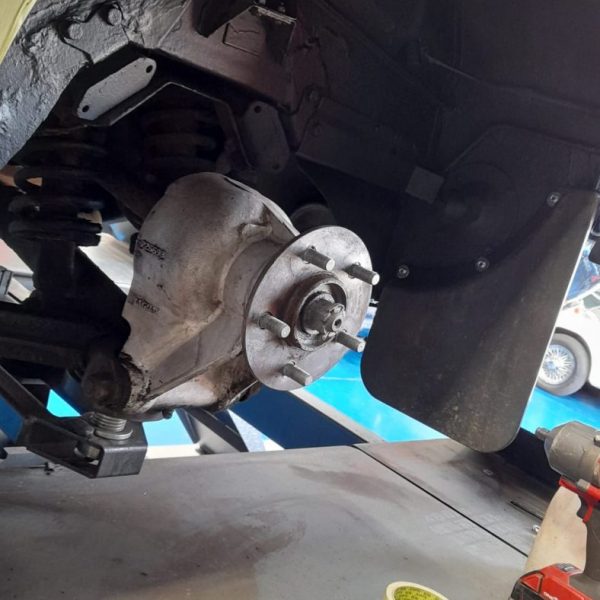
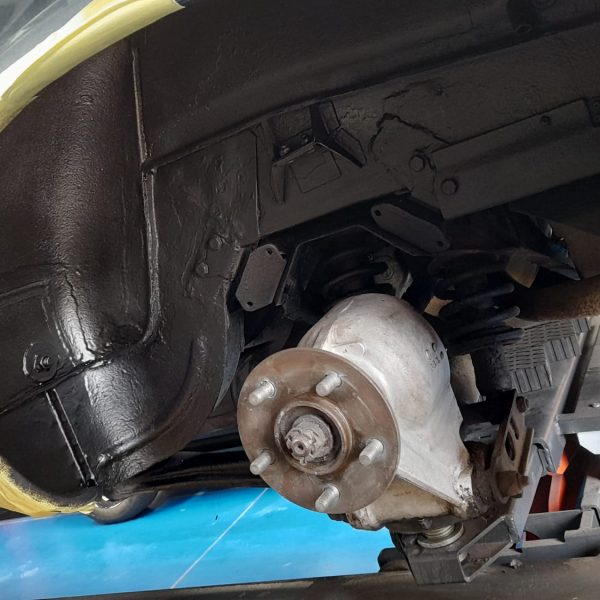
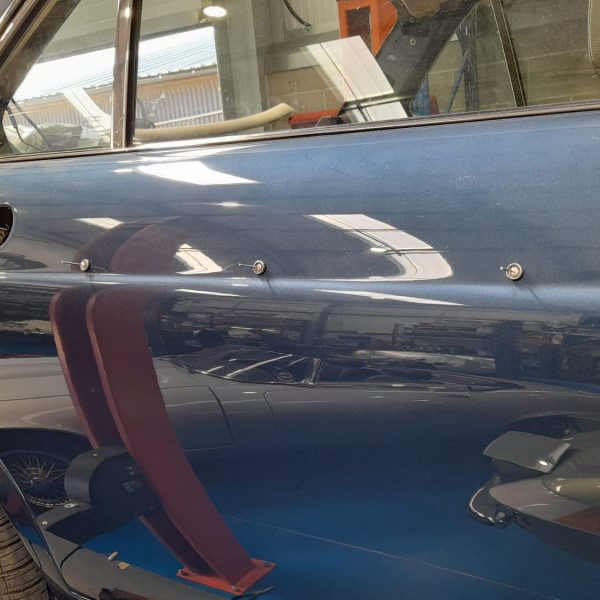
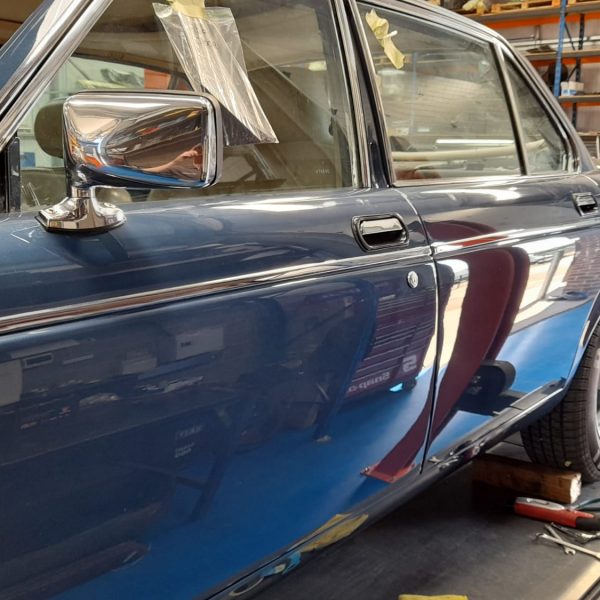
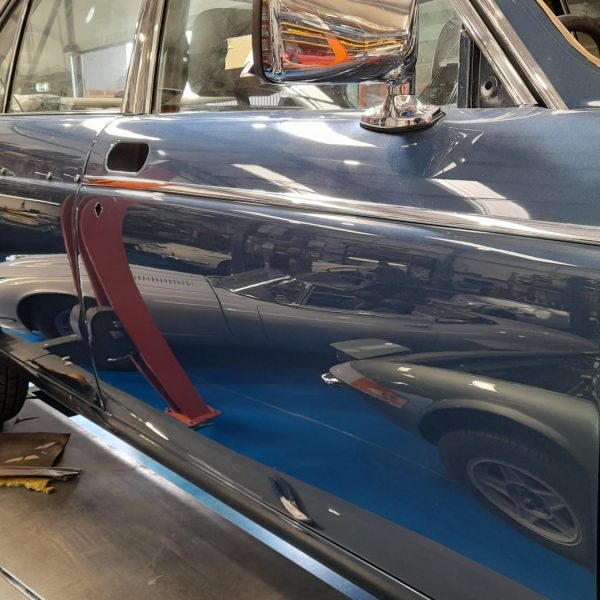
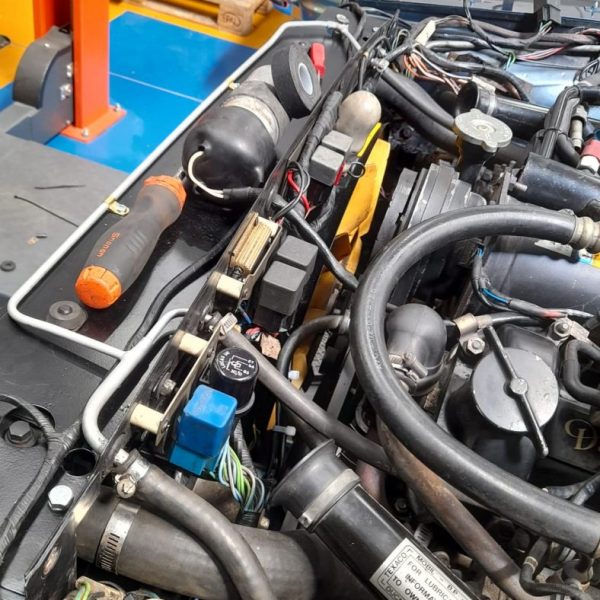
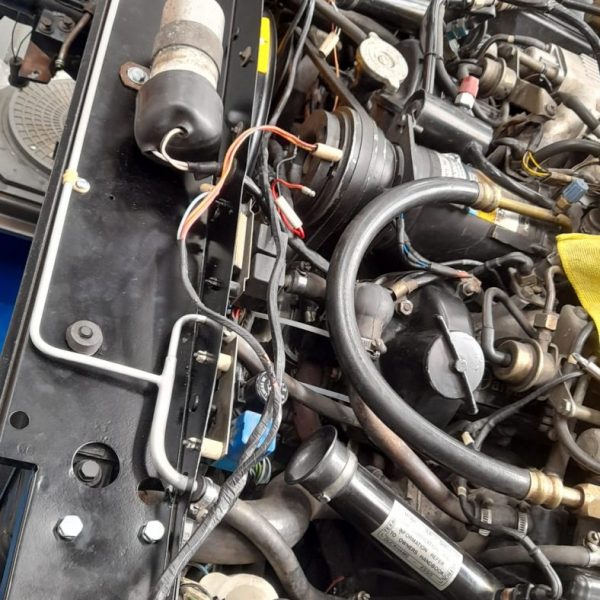
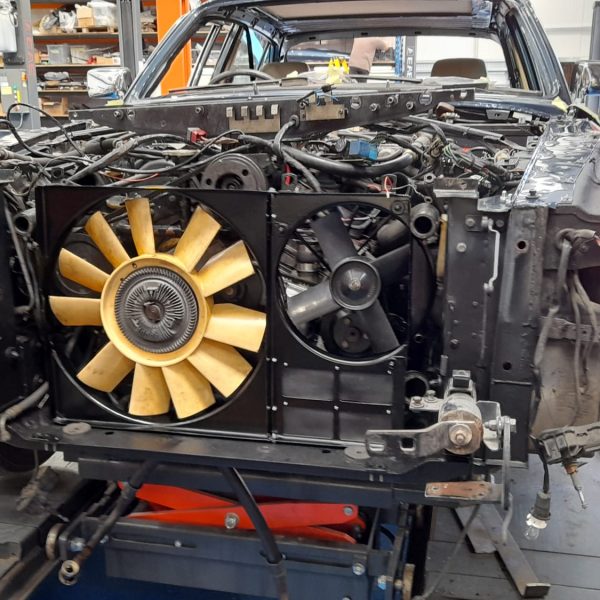

The 1987 Daimler Double Six has been coming back together in the Bridge Classic Cars restoration workshop at our Suffolk HQ.
The workshop team have been getting the classic Daimler back together in order to perform the first fire-up of the V12. Firstly the team have put the newly repainted and refurbished fan shroud onto the cars core support so the various leads and hoses can be routed on the front of the car. At the same time, the team have worked on refitting the chrome trim to the flanks of the Daimler as well as spraying the wheel wells with durable, hard-wearing black paint.
This is all part of the cars restoration journey, in which the team will fire up the car to check all the necessary systems which were removed from the car.
The workshop team at Bridge Classic Cars have fired up the ‘Barn Find’ 1959 Jensen 541R for the first time in several years.
The team used a small electric fuel pump to feed the carburettors, cleaned up the spark plugs and it fired up first time! The 4-litre straight-six ran absolutely perfectly with our workshop manager Jon at the wheel and our senior technician Dave handling the fuel.
Take a look at this amazing moment at our Suffolk HQ.
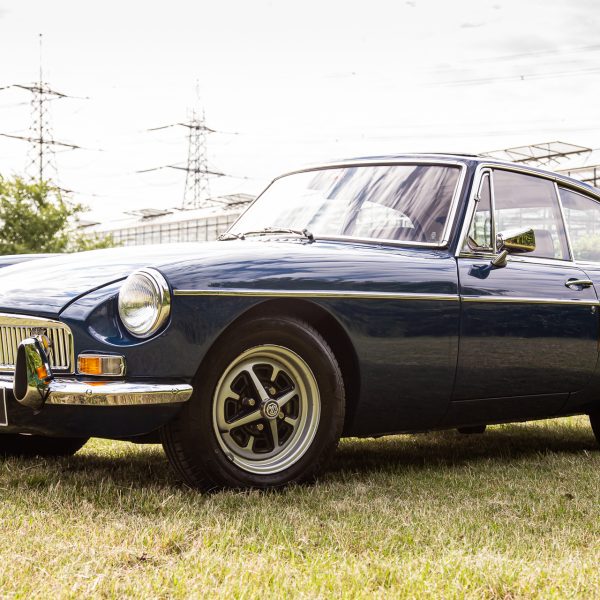

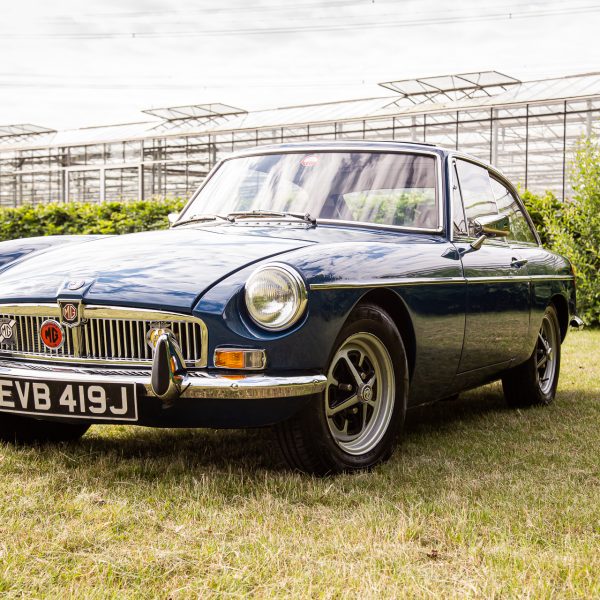
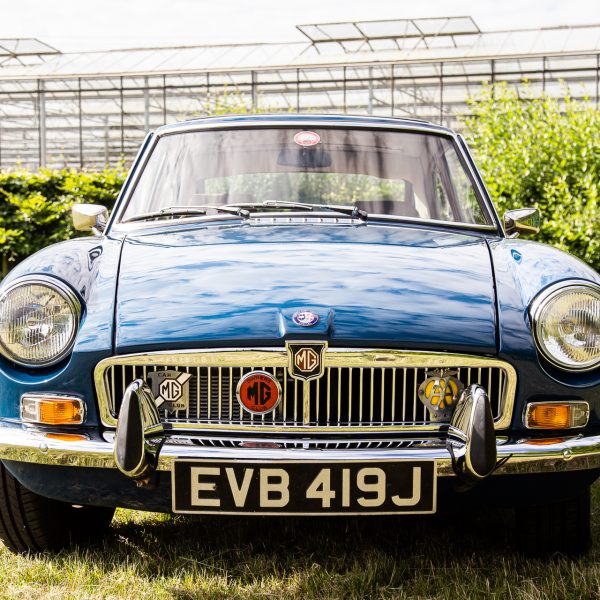
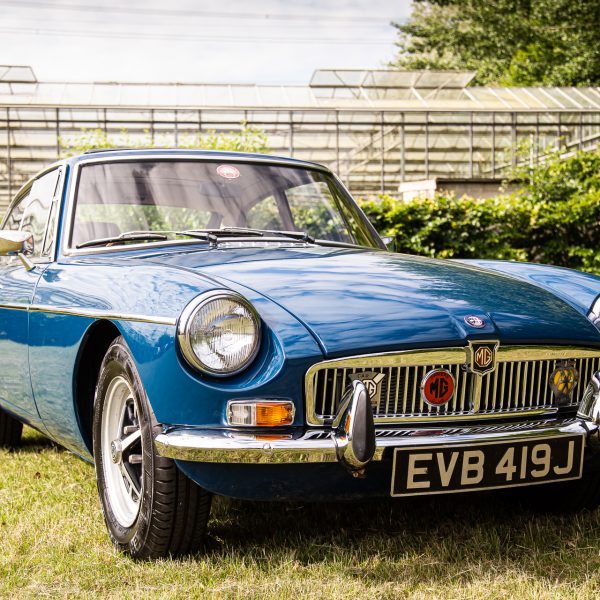

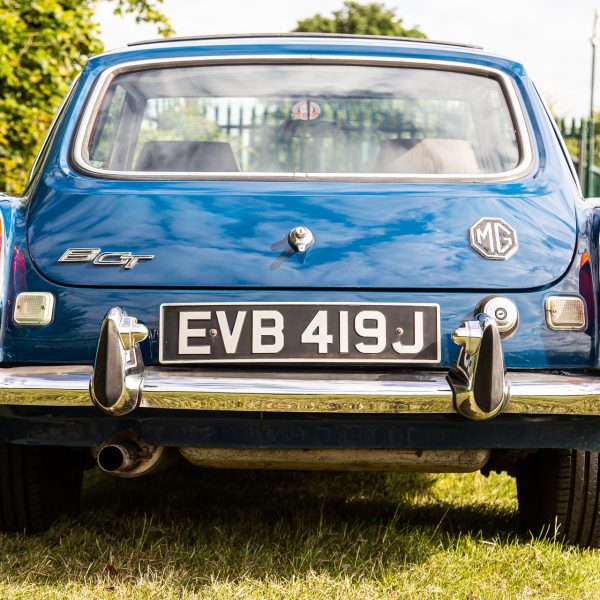

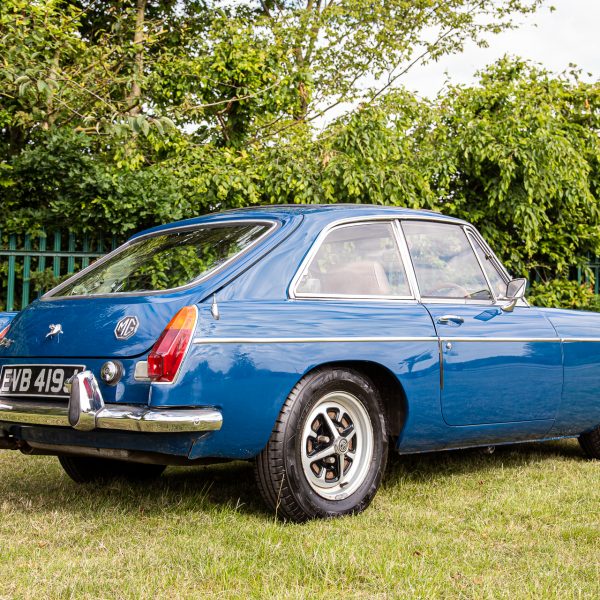

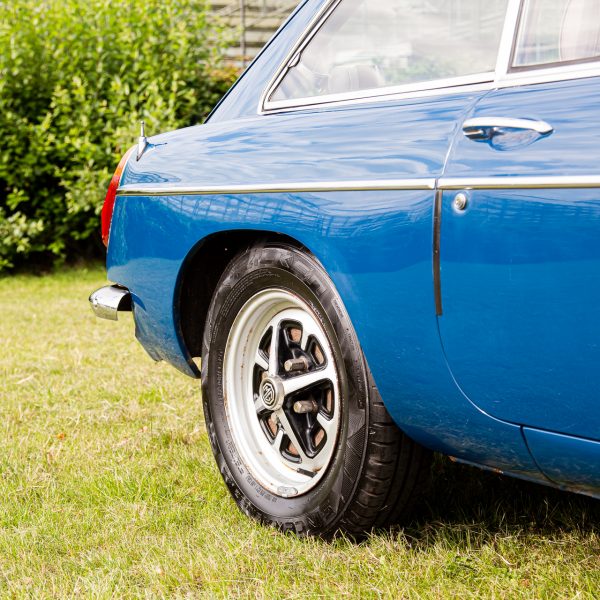

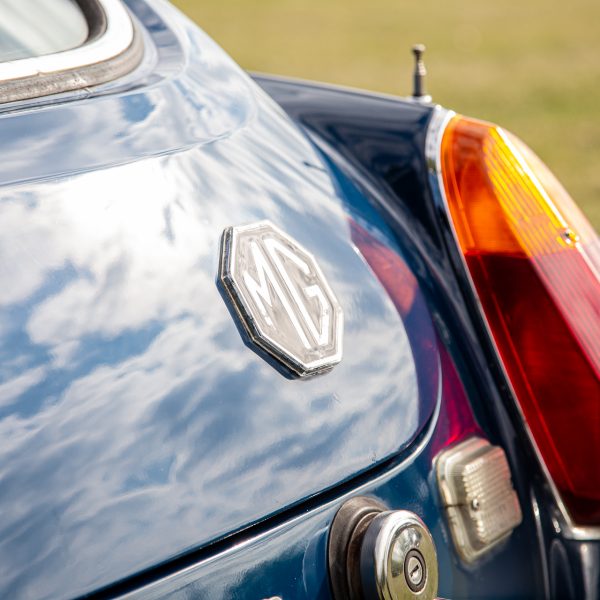

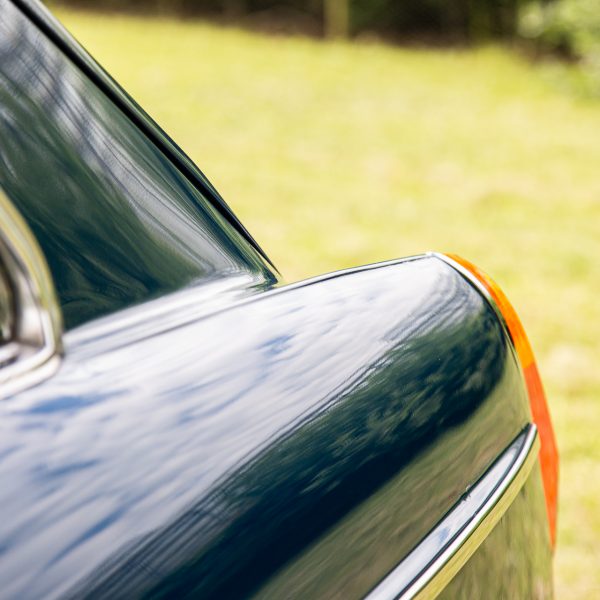
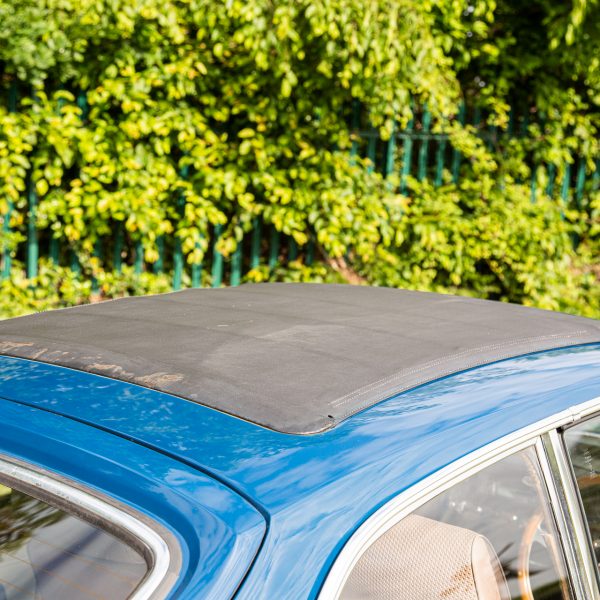

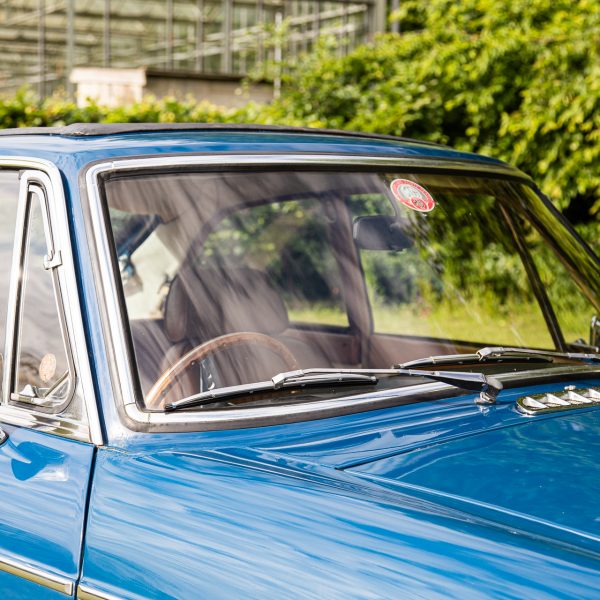
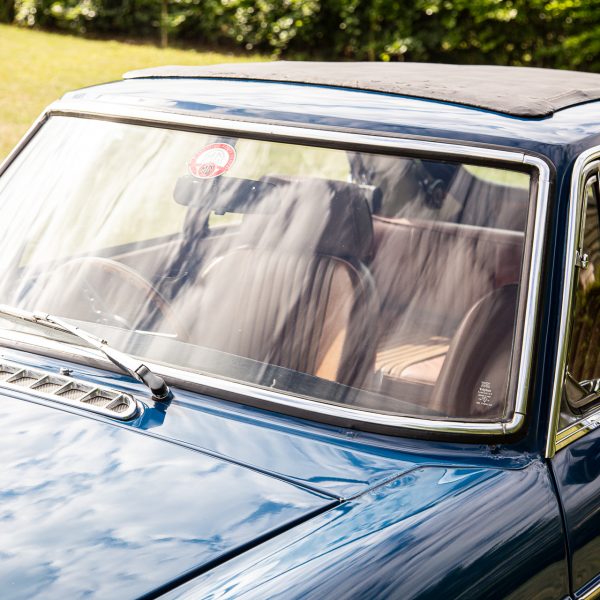


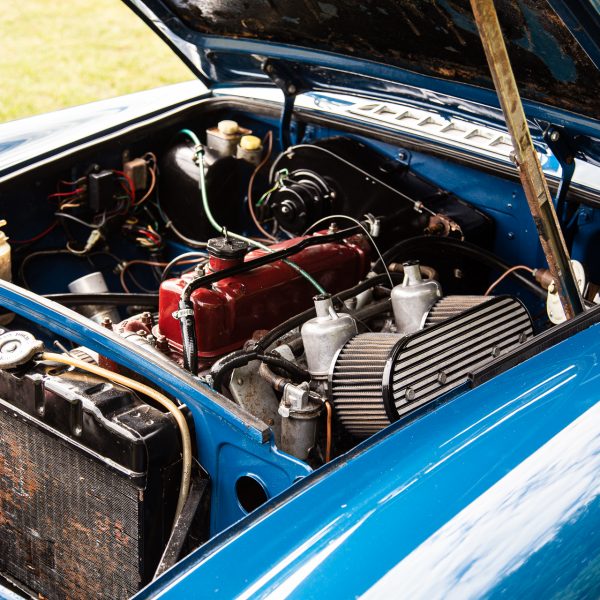
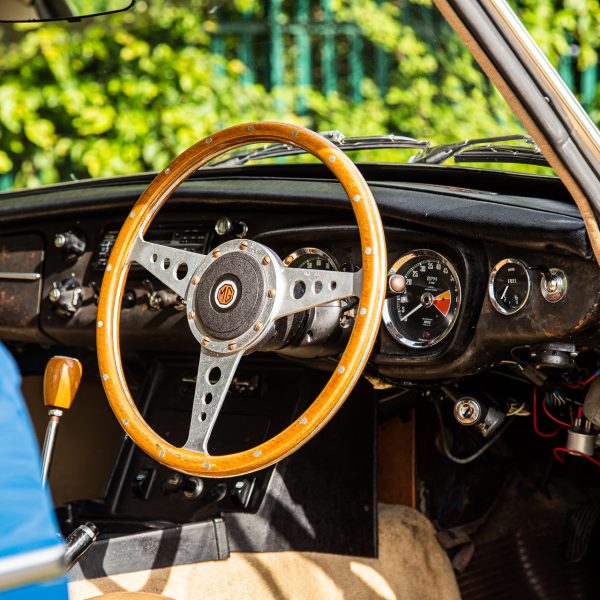
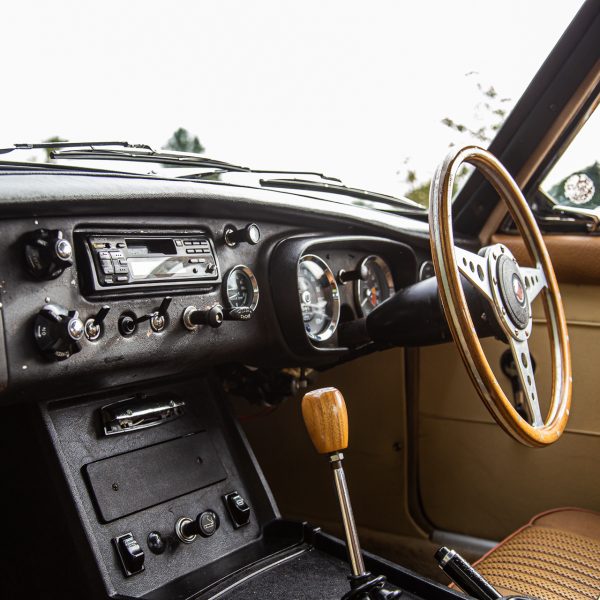
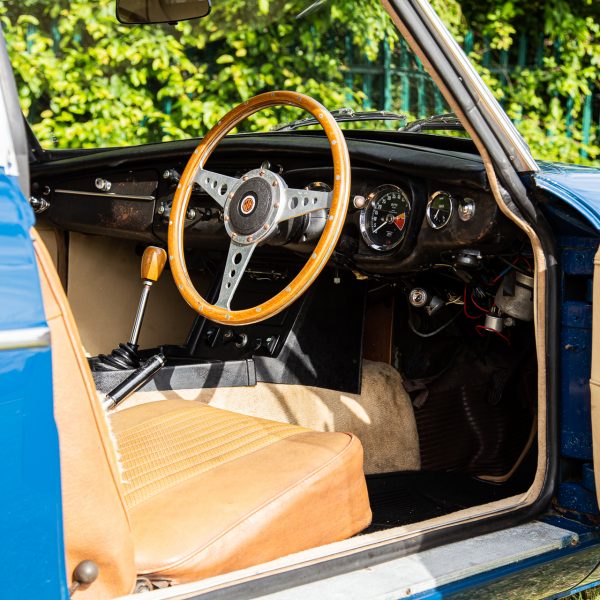
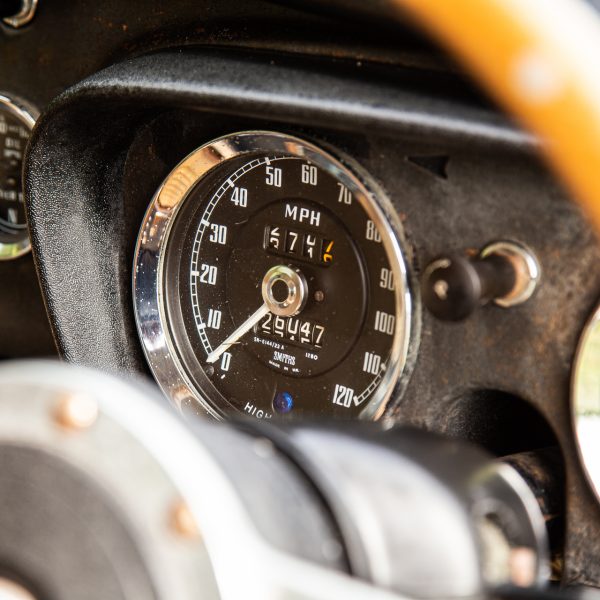



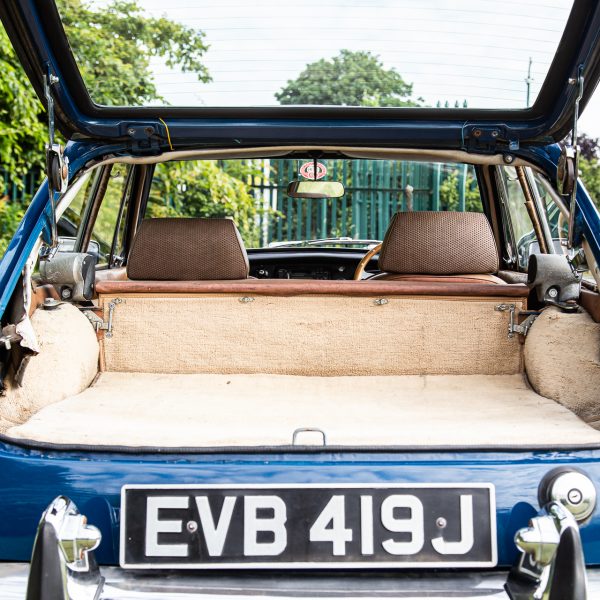


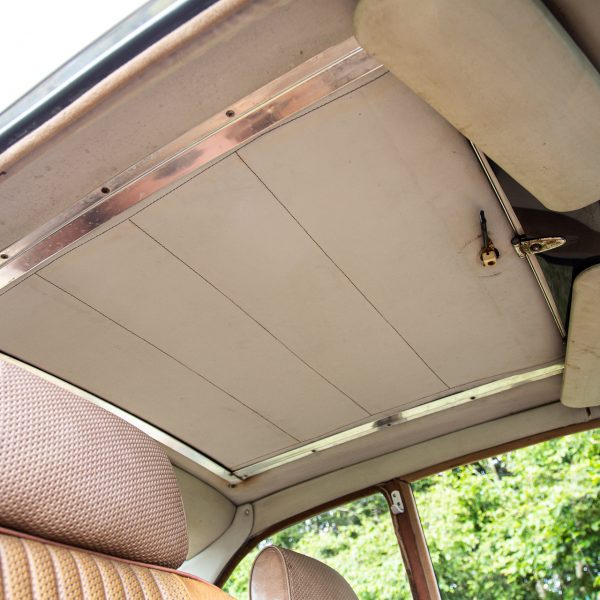
The beautiful bright-blue 1971 MG B GT which recently arrived at the Bridge Classic Cars workshop has been bought by a member of the team!
Our Marketing Manager Freddie has bought the classic sports car which he’ll be using as his daily commuter and also for sunny days out to use and enjoy.
Freddie has promised us that he’s going to keep us updated with the little jobs he does on the car and the trips out he makes in his amazing first classic.
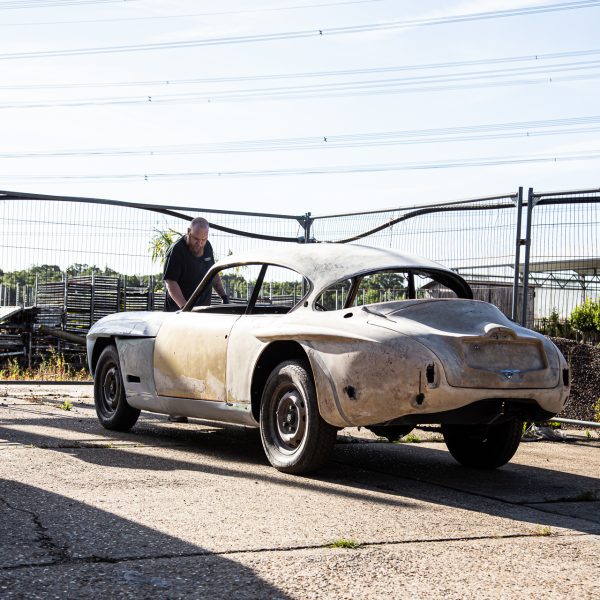
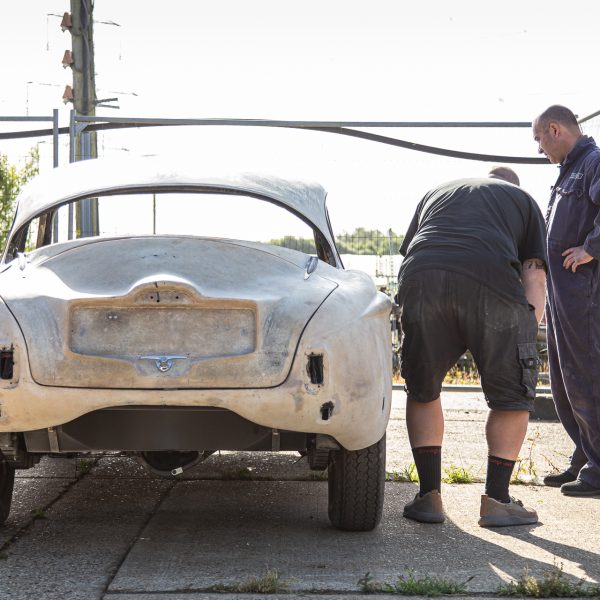
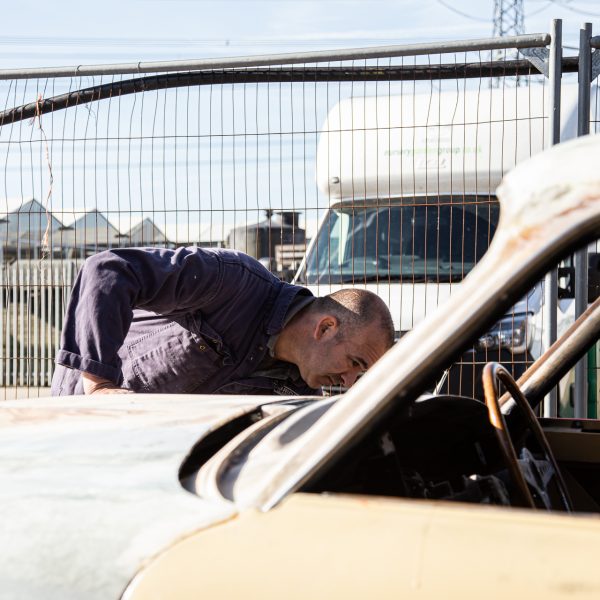

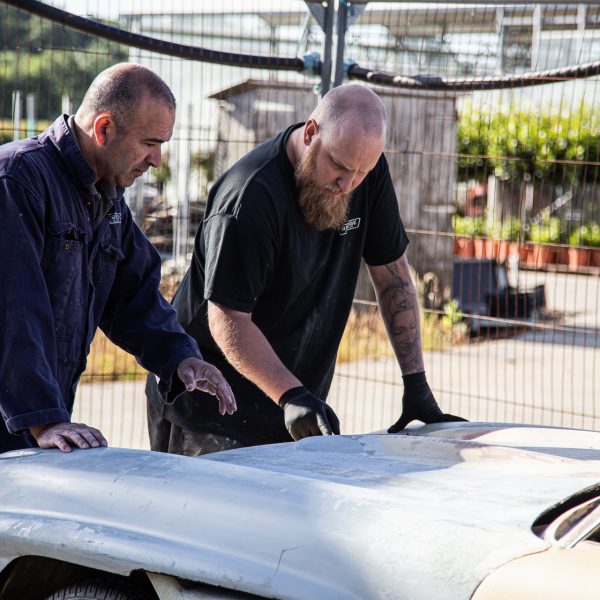
The paint and body team at the Bridge Classic Cars restoration workshop have been out to inspect the 1958 Jensen 541R which arrived yesterday at the Bridge Classic Cars Suffolk HQ from Holland.
Chris and Mauro inspected the body for damage and areas which need repair or refinement in order to come up with a plan to get this stunning 1950s GT car into the best shape possible before heading into the booth for its paintwork.
The car will be finished in Ice Blue Metallic with a Lobelia Blue roof by the team for its owner.

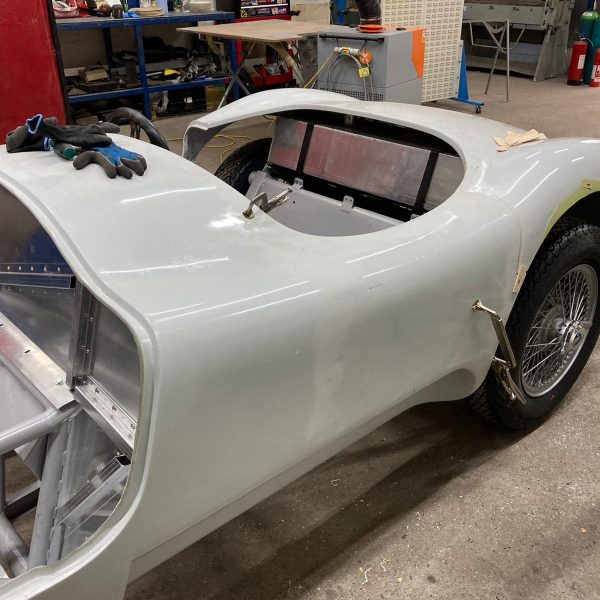



The body and handmade bulkhead have been fitted into our C-Type Replica by the Bridge Classic Cars in-house fabrication shop.
Our fabricator Clinton has hand-finished and bead-rolled the aluminium bulkhead for the Bridge C-Type Replica using his experience and reference photos of the original car. Along with that, he has fit the body onto the spaceframe to begin lining up all the necessary pieces to the car in preparation for the bulkhead being fitted.

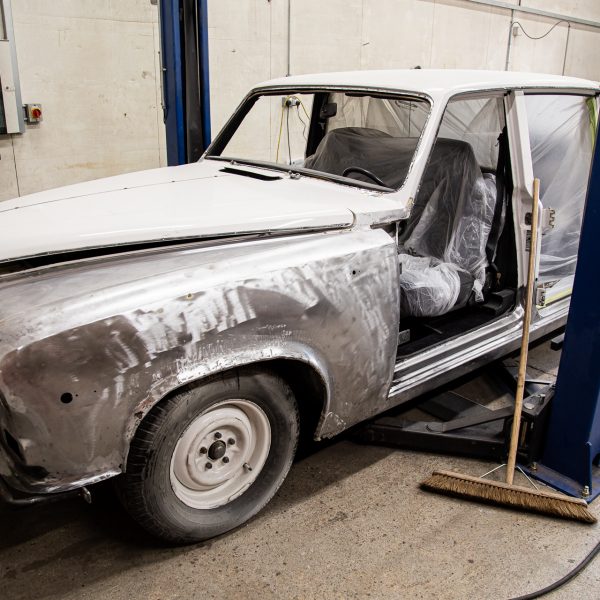
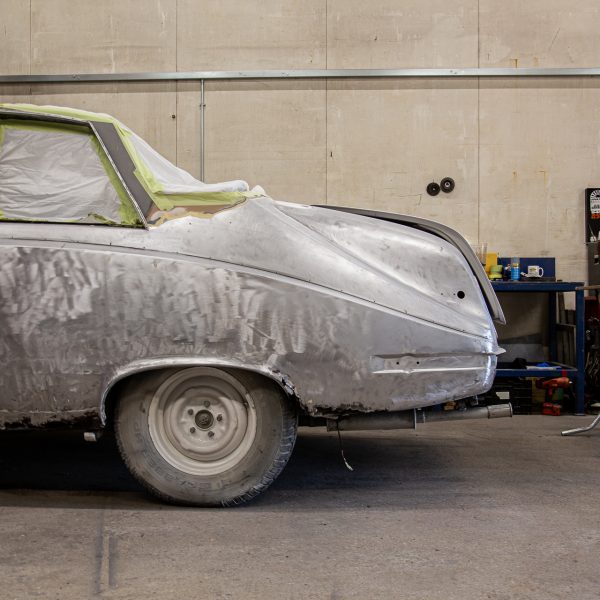
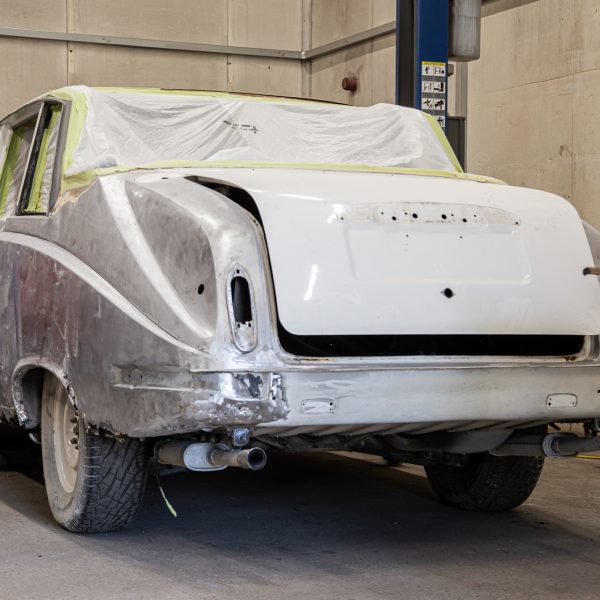
The 1986 Daimler DS420 has been moved from the body preparation department into the in-house fabrication shop at the Bridge Classic Cars Suffolk restoration workshops.
After having the body stripped back to discover some areas of quite deep corrosion by the body team, it is now down to the fabrication department to get the metal on the classic Daimler back in order. First, the team will carry out an assessment of the area to see how deep and far into or up the car the corrosion goes and then work out a plan to get the fresh pieces securely and properly welded into the car.
There will be more updates very soon on the metal repairs to the 1986 Daimler DS420.
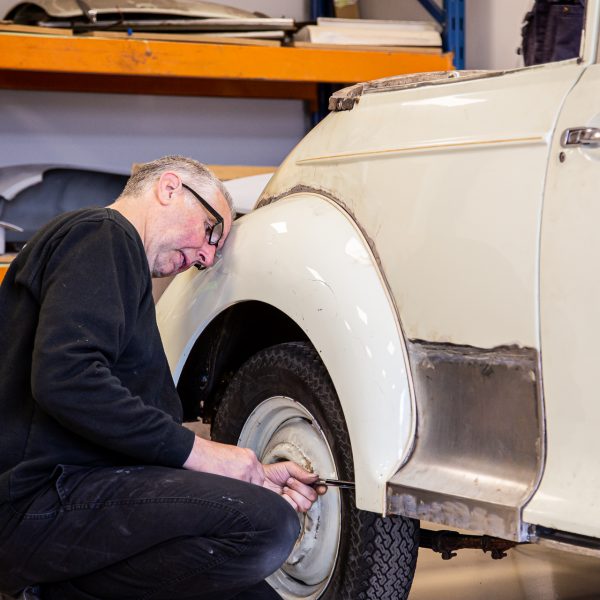
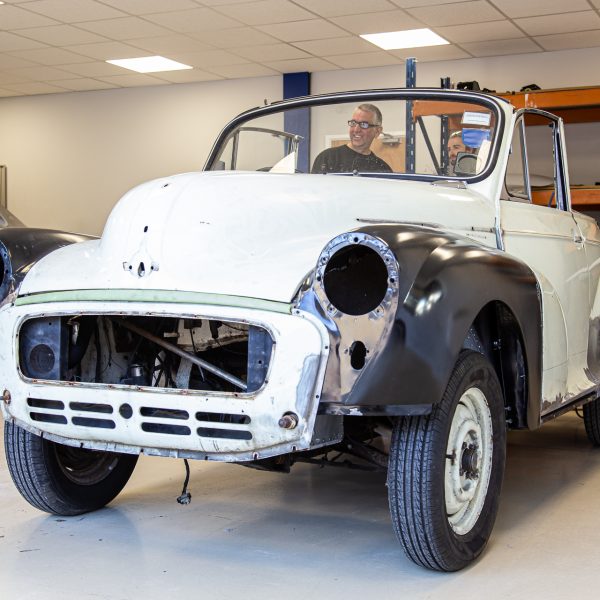


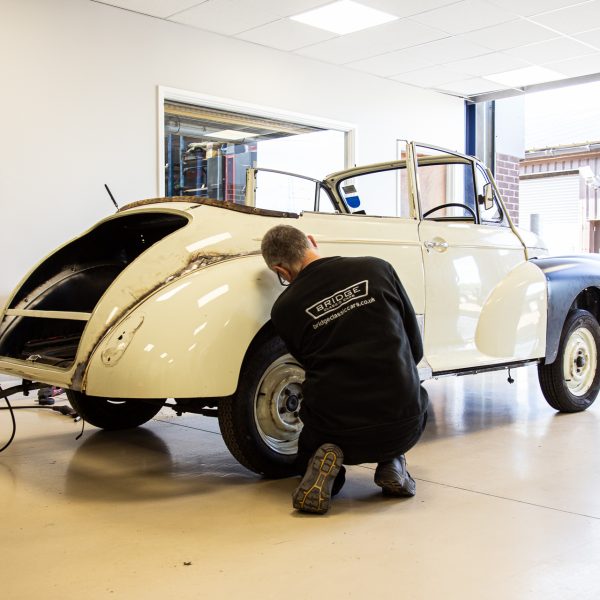
The 1969 Morris Minor Convertible has moved over from the fabrication bay into the body shop here at the Bridge Classic Cars HQ in Suffolk.
After extensive and crucial metal work had been done, the car now will be worked on by our paint and body technicians to perfect its shape and lines before the paint team take the car into our on-site booth/oven and begin its process into colour as part of its restoration journey.
Keep an eye out on the Bridge Classic Cars news page for more updates soon on the 1969 Morris Minor Convertible


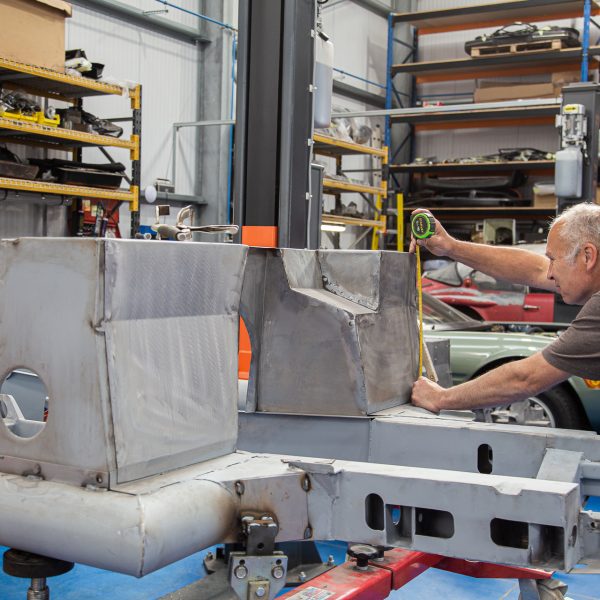
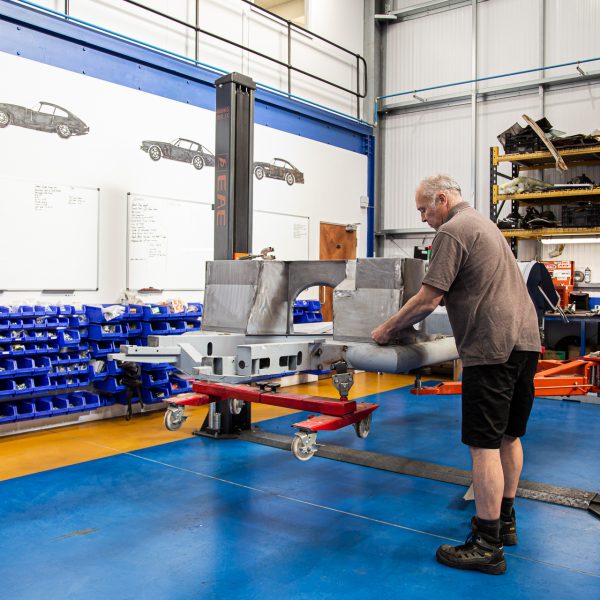
The 1956 Jensen 541 chassis which arrived back at the Bridge Classic Cars HQ recently has been moved into our restoration workshops for the team to begin work on the brand-new frame.
At this stage, Rob is preparing the blank bulkhead to be fitted onto the car in preparation for its left-hand drive conversion. Carefully he has set the pieces into place along the bulkhead before using another 541 chassis next to it in the workshop as reference. This will be used as a guide for hole diameters and orientation purposes for the brand new, hand-made chassis for the 1956 Jensen 541 undergoing its restoration journey.
Keep a look out on the Bridge Classic Cars news page for more updates on the 1956 Jensen 541 restoration very soon.



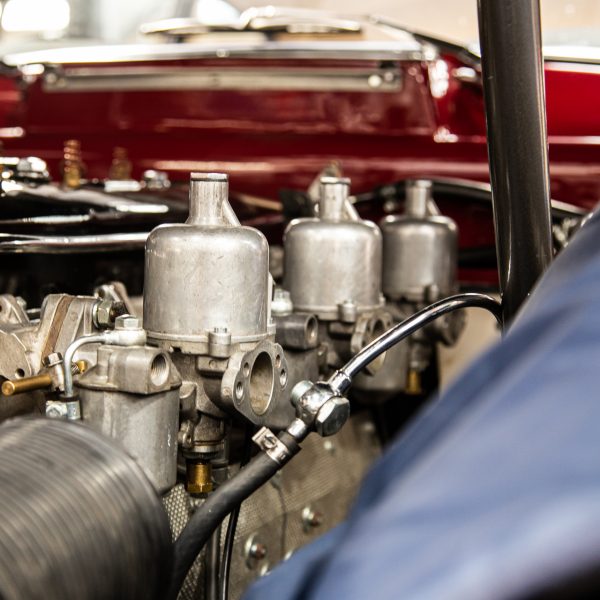
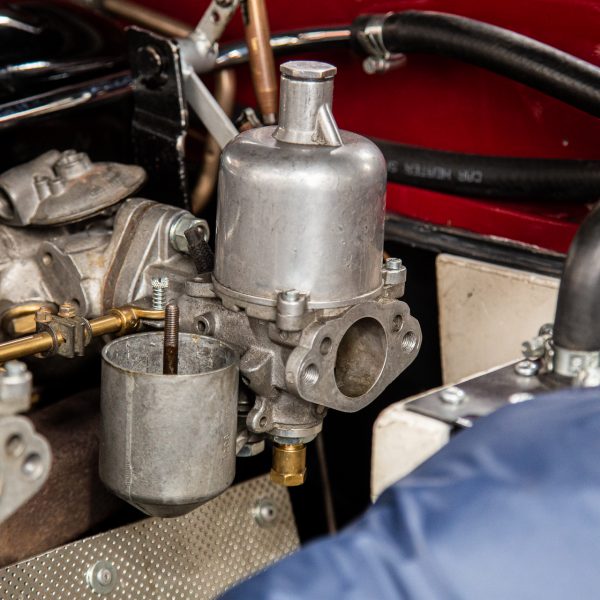
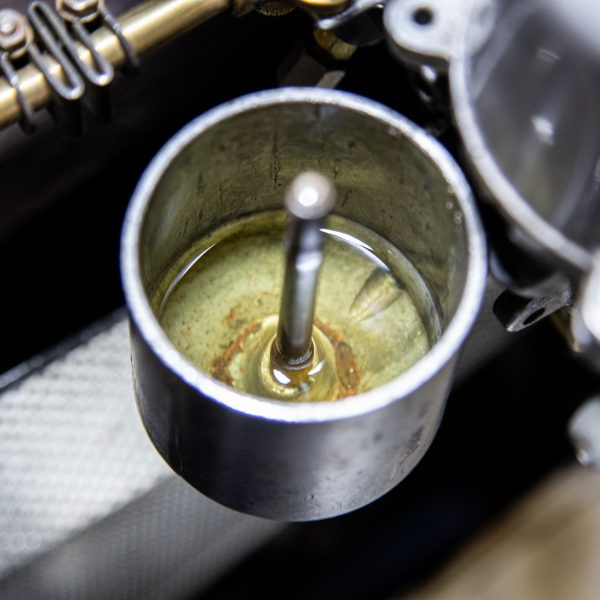
The Bridge Classic Cars workshop team have been looking at the 1960 Jensen 541S as part of an investigation into a running issue on the classic GT car.
The team have decided to drain the fuel tank on the classic Jensen to both inspect the fuel and the tank itself as part of the diagnostics. For this, the team use a small electric fuel pump to siphon the fuel out of the tank to be stored in transparent containers for visual inspection of sediment or dirt.
Then, the team can begin the visual inspection of the fuel tank itself to check for debris or dirt in different areas. At the same time, they will begin to inspect the carburettor for any build-up of dirt and debris. After looking into the bowls of the carburettor, they found some small deposits of sediment at the base of the bowls but not an amount which could cause the issue.
The team will continue to inspect and investigate the root cause of the running issue on the 1960 Jensen 541S.
Bridge Classic Cars are award winning Classic Car Restoration and Maintenance specialists. Your pride and joy is in safe hands with our expert Classic Car Technicians. Take a look at our awards here.
We use cookies to deliver the best possible experience whilst visiting our website. By clicking "Accept All", you consent to our use of cookies, or you can manage your preferences by clicking the link below. You can manage your preferences at any time from out Cookie Policy page.